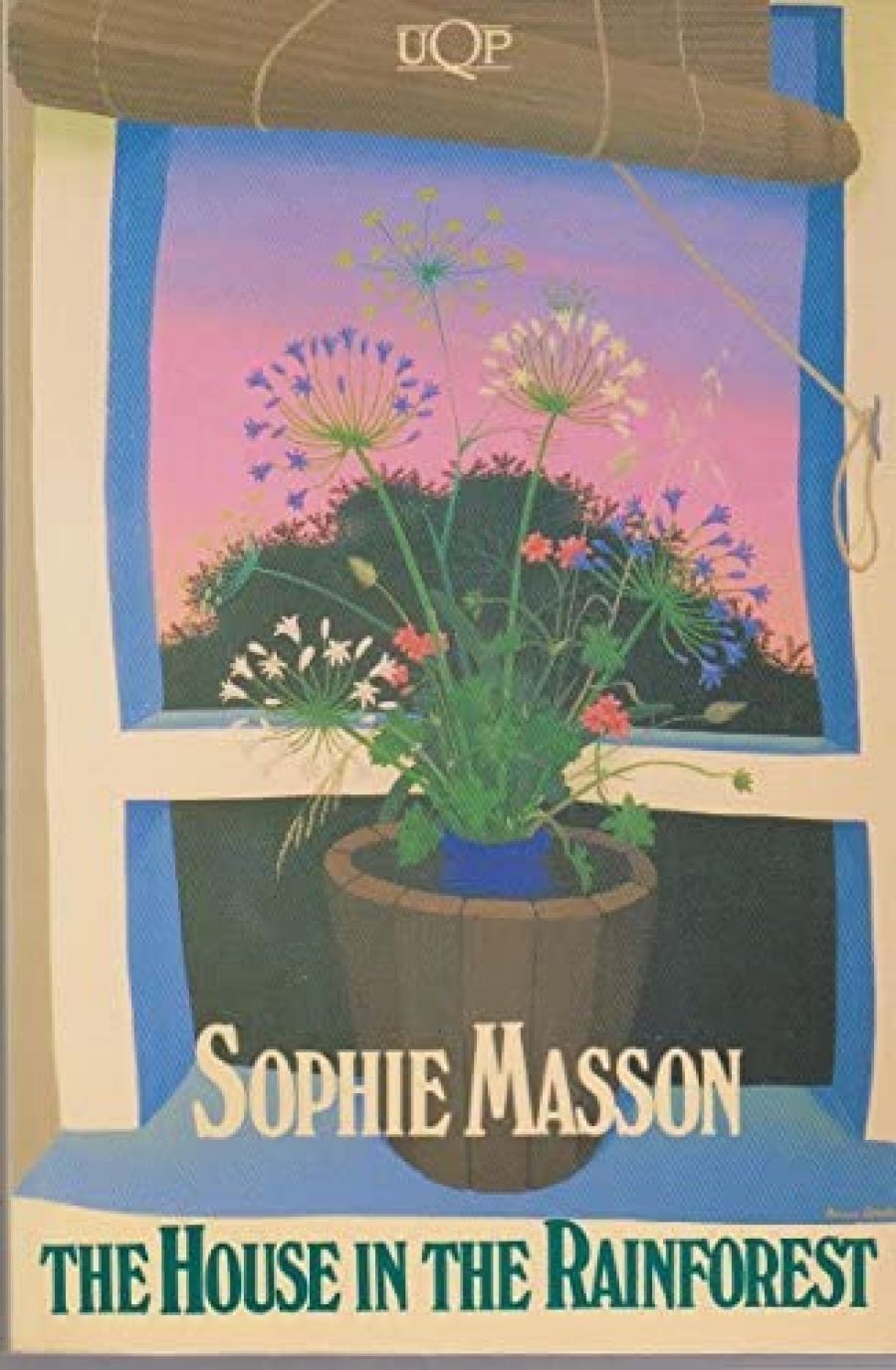
- Free Article: No
- Contents Category: Fiction
- Review Article: Yes
- Article Title: Bête noire of the self
- Online Only: No
- Custom Highlight Text:
Sophie Masson’s first novel deals with the probing of emotional wounds. It alternates from present to past as a journalist goes back to her village to write a story on a Family Court tragedy about people with whom her past is inexorably entangled. Set in northern New South Wales and Sydney, it examines the slow death of the rainforest areas and their rebirth as alternative lifestyle habitats for people fleeing the city.
- Book 1 Title: The House in the Rainforest
- Book 1 Biblio: UQP, 238pp, $12.95pb
To Kate’s father, the rainforest means an income from ‘the splendid destructiveness of timber-work’, the beauty and silence of the canopy are completely lost on him. For Kate, it has an overwhelming, slightly morbid, fascination with its dark interior and the small house in the middle which she regards as hers until strangers claim it. The symbol of the house threatened by encroaching vines and almost carnivorous plants recurs throughout, almost too often.
The major characters are finely drawn yet others with whom she spars, such as her parents, are little more than stereotypes. This isn’t a problem, it merely leaves the reader conscious of the gap between characters Masson approves of and those she does not. Minor characters, types or not, are often a delight as she dissects them slowly and savagely. The university poet, for example, who passionately denounces the work of other poets, ‘his bushy ginger beard hopping up and down over his mouth as if it were a ferocious animal’. He despises the work of any poet who has come before him: ‘his work, he said, was completely original and owed nothing to anyone.’
Kate’s mother ‘out-of-law’ is another. She gives the baby presents complaining of the cost. She’s horrified by demand-feeding, and insists that crying will ‘develop her lungs, you know!’, adding, ‘we put him at the other end of the house’. As to toilet training, ‘No matter how long it took, I held you over that pot’, she says. And her son replies, ‘We have better things to do with our time’.
Ironically Kate feels pity for this woman yet cannot forgive her own parents - those who cause us long-term pain are harder to forgive. Her inability to form friendships and her strong defences against intimacy are the legacies of this suppressed pain.
When Kate finally faces her bête-noir from the rainforest, it is a brief, unsatisfying meeting and nothing is resolved. A taped interview with a nurse follows but is never mentioned again. Masson is not concerned with events but with Kate’s development and growing ability to confront painful aspects of herself.
Alongside touches like this description of snakes, ‘their slim bodies slithered elegant as Vogue models across the grass’, it is a pity to find easy cliches at other times. Miso is described as looking like ‘something the cat had done behind the telly’ and people are described as ‘looking at me as if I was a not particularly nice species of worm’. Cliches fit the dialogue of types, but in prose Masson can do better. Still, The House in the Rainforest is a promising start.


Comments powered by CComment